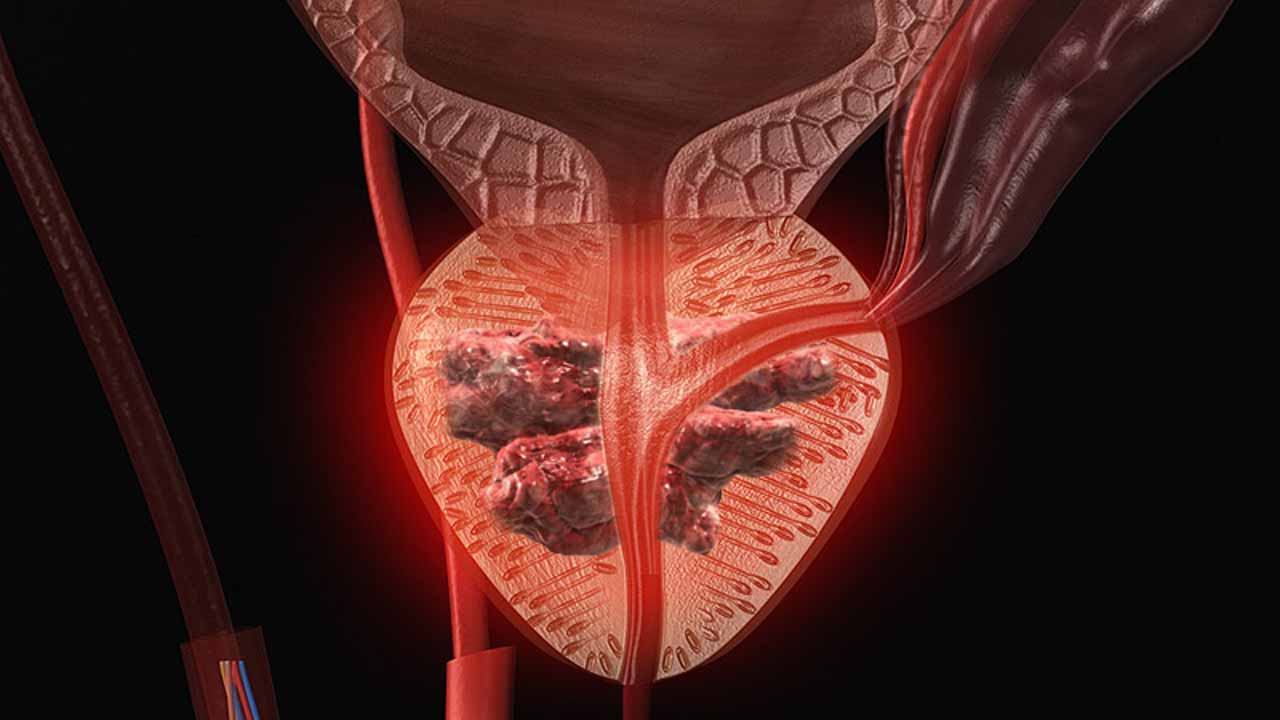It occurs in every seventh man over 50 years old. And, unfortunately, this disease is one of the most common causes of death in older men.
The prostate or prostate gland is an internal organ of the male reproductive system, which, like a wide bracelet, covers the initial sections of the urethra. The main functions of the prostate are to produce part of the semen (up to 30% of the total) and participate in the act of ejaculation. The prostate also has a lot to do with a man’s ability to retain urine.
Prostate cancer is a malignant tumor that usually develops from the tissue of the prostate glands. Like other cancers, prostate cancer tends to metastasize (spread throughout the body).
The statistics are unrelenting: prostate cancer occurs in every seventh man over 50. And, unfortunately, this disease is one of the most common causes of death in older men.
Causes
Until now, the causes of prostate cancer are not fully understood. However, it is known for certain that the disease is associated with the male sex hormone – testosterone. The higher the level in the patient’s blood, the more likely he will develop prostate cancer and the more malignant the disease will be.
Risk factors also include:
elderly age;
poor heredity (close relatives are sick with prostate cancer);
existing progressive prostate adenoma;
bad ecology;
work with cadmium (welding and printing works, rubber production);
improper diet (a lot of animal fats, little fiber), etc.
What’s happening?
Prostate cancer is usually slow and malignant. This means that the tumor grows relatively slowly (from the moment a microscopic tumor appears in the prostate to the last stage of cancer, it takes an average of 10-15 years).
Prostate cancer can give early metastases, that is, even a small tumor can begin to spread to other organs. Most often, it spreads to the lymph nodes, bones (pelvis, hips, spine), lungs, liver, adrenal glands. This is the biggest danger of cancer. Before metastases appear, the tumor can be removed, and this will stop the disease. But if metastases have appeared, not a single surgeon will be able to remove all of them, and it will be impossible to completely cure a person.
How to recognize?
The problem is that the symptoms of the disease begin to bother a man only when the disease has gone too far, and there is little chance of a complete cure. Prostate cancer can present with increased urination, perineal pain, and blood in the urine and semen. But none of these symptoms may be present. And then the first manifestation of the disease will be the signs that are characteristic of metastases: pain in the bones (pelvis, hip, spine) and fractures, chest pain.
In advanced cases, acute urinary retention may develop, as well as symptoms of cancer intoxication: a person dramatically loses weight, weakens, his skin becomes very pale with an earthy tint.
More rare symptoms of prostate cancer are impotence or weak erection (cancer has affected the nerves that control erection), decreased semen volume during ejaculation (the tumor is blocking the ejaculatory canal).
Diagnostics
If you have problems with urination – urgently contact your urologist. Perhaps not everything is so bad, and it’s just an adenoma or inflammation of the prostate.
First of all, the doctor will check the condition of the prostate gland – he will conduct a digital rectal (through the rectum) examination. This is the easiest way of research to suspect prostate cancer. Unfortunately, if the tumor can be palpated, most often it is already one of the advanced stages of cancer. Therefore, even if the tumor is not palpable, the patient will be prescribed an additional study: a blood test for prostate-specific antigen (PSA).
PSA is a substance whose concentration in a man’s blood increases dramatically in prostate cancer. To clarify the diagnosis, the patient can also be prescribed an ultrasound of the prostate, computed tomography, X-ray and radioisotope studies.
The final diagnosis of prostate cancer is made after a biopsy of the prostate – a small piece of the prostate is taken through the perineum or through the rectum with a special needle for examination.
Treatment
There are surgical, medical and radiation treatments for prostate cancer. The oncologist will decide which method to choose individually, depending on the patient’s age, the prevalence and stage of cancer, and the presence of metastases.
Surgical treatments (removal of the prostate gland) are usually used only when the tumor has not yet metastasized. If the operation is performed successfully, then this practically guarantees a complete cure for prostate cancer without any health consequences.
Drug treatments are treatments with hormones that lower or block testosterone, which can reduce the rate of tumor growth and metastases. Treatment with hormones does not give a complete cure, but it improves the patient’s condition for a long time and reduces the symptoms of the disease. Radiation therapy – radioactive irradiation of a prostate tumor, also allows you to reduce the rate of tumor growth, reduce the likelihood of metastases, but does not guarantee a complete cure for cancer.
Often, radiation and drug therapy are used together to enhance the effect of treatment.
An alternative method of radiation exposure to the prostate https://en.wikipedia.org/wiki/Prostate gland in the early stages of the disease is brachytherapy. The essence of the method: under the control of ultrasound, granules of radioactive iodine are injected into the prostate gland, due to which a high dose of radiation is achieved in the zone of malignancy, and the surrounding tissues practically do not suffer. The procedure for the introduction of capsules takes about an hour and is performed on an outpatient basis, which compares favorably with other types of radiation treatment.
